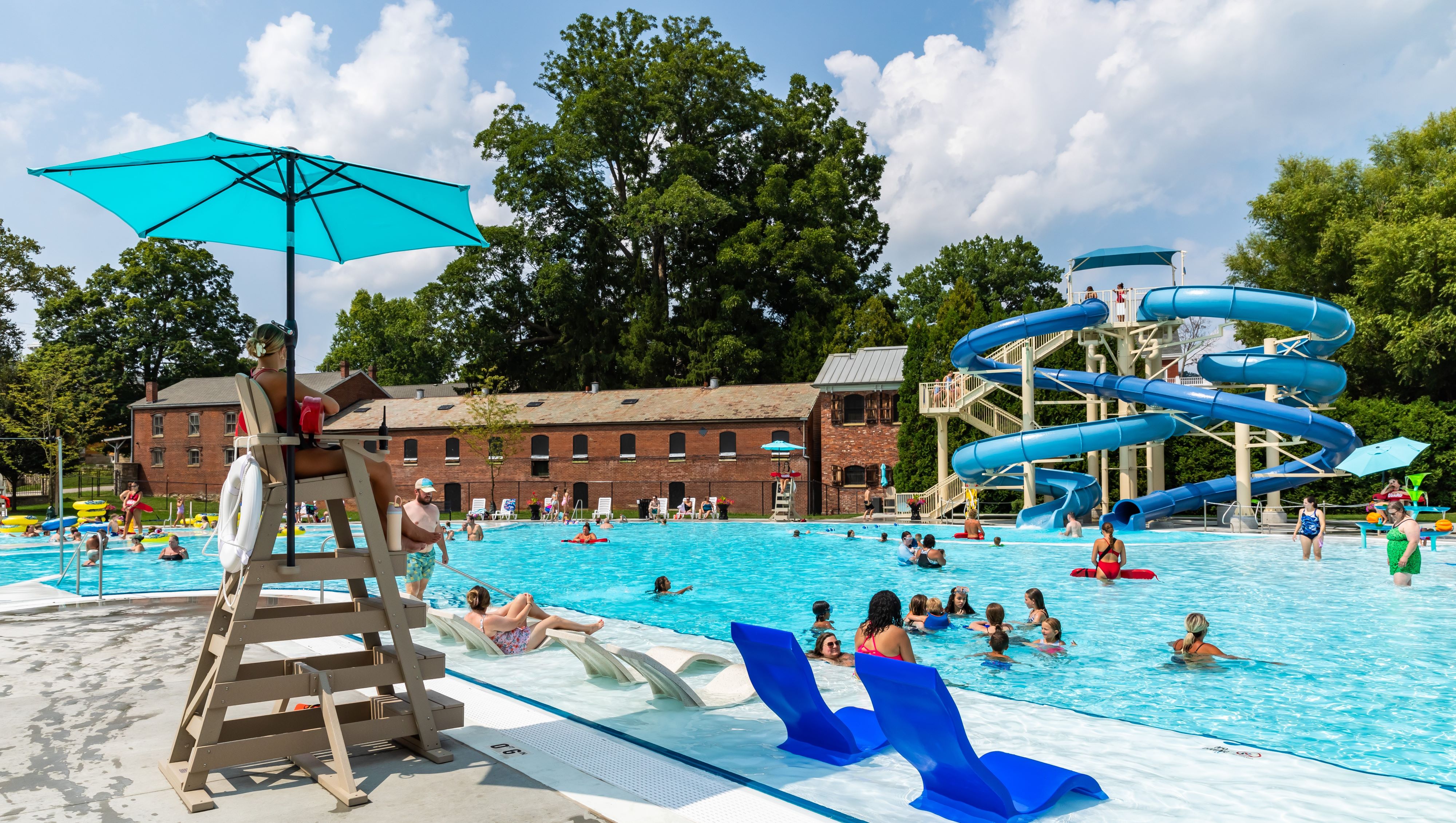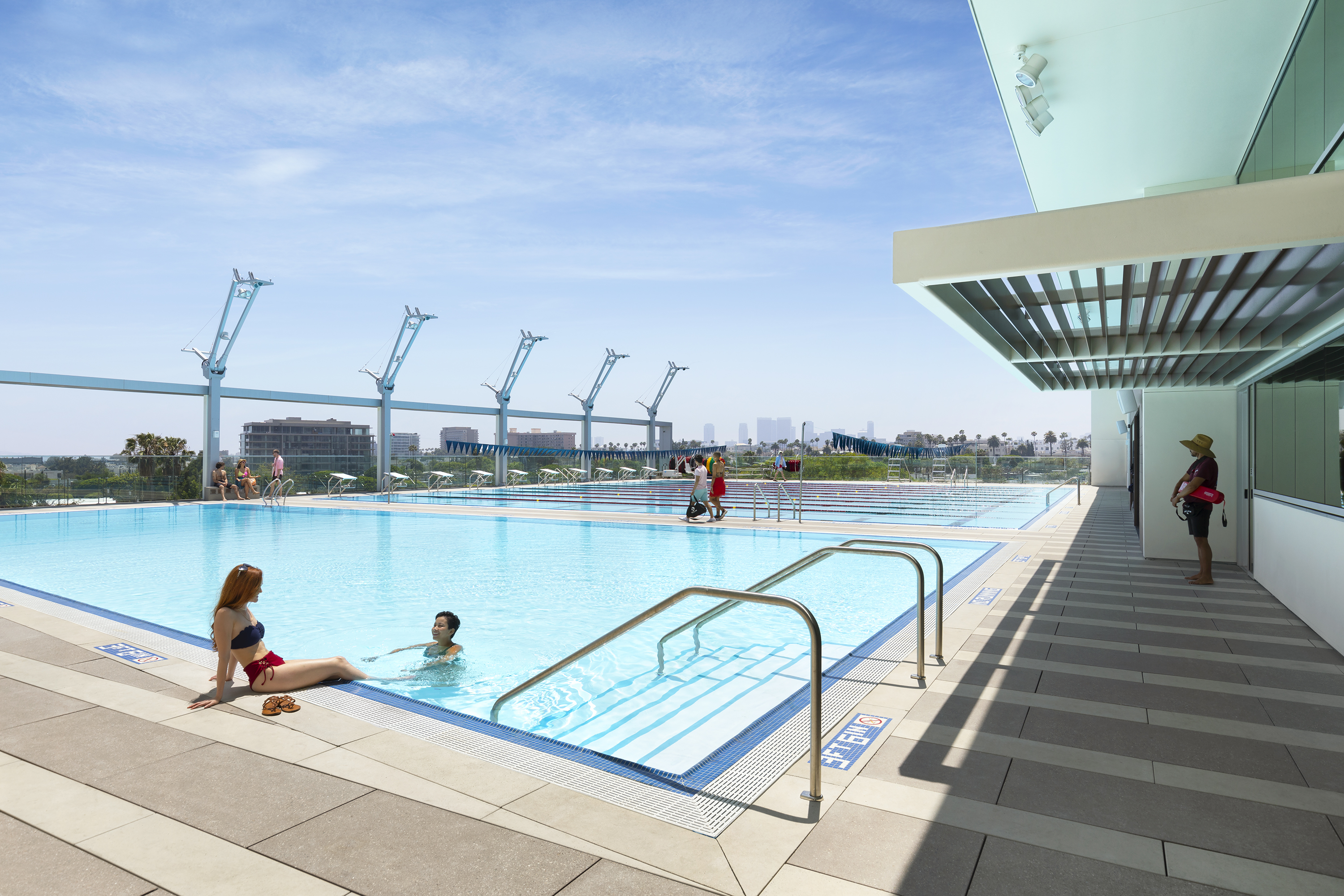THE CANVAS: Autumn trees standing watch, a house of clean lines, the distant rhythm of the Potomac
THE PALETTE: Warm Ipe wood, cool bluestone, underwater glass that hides boundaries
THE MASTERPIECE: A curved vanishing edge imitates the river’s shape, discipline, freedom, a bridge between industrial steel and golden forest
Sometimes the greatest innovations occur when visions collide. That’s what happened when a Washington, D.C.-area family asked one of the most celebrated contemporary architects in the region for a natural pool.
They loved the sculptural home he had designed. It was an assembly of clean lines, stucco, steel and gray-washed wood. But when discussing the pool, they reverted back to traditional forms.
“They wanted a natural pool with boulders. I thought that was going to be a little too rustic for this house,” says Mark McInturff of McInturff Architects in Bethesda, Md. “So I tried to bridge the gap by making a pool that was sort of organic in shape, but still answered the actual geometry of the house.”
By combining the lines of the house with the mood of the site — and packing in several fun features — McInturff developed this masterpiece. It’s spare enough in line to make it undeniably contemporary, yet has enough warmth to mingle with its woodsy environs.
Nature’s tapestry
In a way, the clients’ desire for nature made sense. The Potomac River sits about a quarter-mile away, with a pond nestled in between. “We saw the pool as the first of three bodies of water,” McInturff says.
The pool needed to reach in two directions: toward the profuse, natural scenery and then back to the contemporary home. To bridge the gap, McInturff knew a reflecting pool was a must. Black plaster would enhance the mirror effect of the water, and a 6-by-6-inch flagstone tile line would retain the deep color and elegance of the property.
McInturff designed one pool wall in a curved shape to mimic the arcs of the home’s Great Room, which acts as a combination kitchen/dining/family area. He wanted the pool to wrap around much of the back façade, so it could be seen from most rooms in the home. However, he didn’t want a structural behemoth to support on the sloped slot. To reconcile these conflicting objectives, he made the main pool a manageable width and extended narrow legs on either side of it to run close to the residence.
The side walls of the main pool also were dictated by the Great Room, which surrounds a circular light well. Steel beams on the ceiling radiate from the light well toward the back. McInturff extended two of the lines to the back of the property to establish the pool’s side walls. Now the vessel had a fan shape to properly frame the panoramic view.
To integrate the pool with the natural view, McInturff used its outer-most wall, which has a vanishing edge. He loosened up the lines, giving the pool a free-form, serpentine edge for an impressionistic panorama of the riverbed beyond.
“It’s almost like ripples in a pond,” McInturff says. “It loosens up and becomes a more free-form kind of shape.”
He had the pebble-in-a-pond analogy in mind from the beginning. “It’s almost like we dropped a stone in a pond at that circle and all the ripples gave us the Great Room and the pool edge as they went out,” McInturff says.
The heart of the matter
With the form established, he could focus on what the clients wanted to experience, namely, fun. “I wanted to have a bridge that you could swim under,” he says. “It’s like taking a gondola ride on the canals of Venice and looking up at all the bridges overhead as you go under them.”
The bridge enabled McInturff to incorporate two primary materials from the home exterior (steel railing and wood paneling) into the hardscape. He chose Ipe (pronounced e-pay) wood for its elegance and durability. People can dive off the bridge or swim under it via one of the pool’s narrow legs.
Opposite this whimsical feature is the center of relaxation, a spa at the end of the other “leg.” A glass wall cordons off the warm water from the cold. That way, the homeowners have a separate body of water while still retaining the pool’s original outline.
Technical challenge
Construction went smoothly for Lewis Aquatech Pool & Supply, a Chantilly, Va., firm tackling some of the most upscale projects in Washington, D.C. Vice President Don Gwiz is almost nonchalant about it, except for one detail. “We’ve probably built 40 negative edges, but this is the first [one] we did that has a serpentine wall,” he says.
Creating curved forms with the rigid 3/4-inch plywood was a challenge. He and his crews maneuvered the curves with narrower-than-normal sections of wood, which measured about 2 to 3 feet wide.
Installing the glass wall that partitions the spa was a unique experience, too. Lewis Aquatech had only done it one other time. To prepare the shell for the glass, crews notched it and then placed marine-grade fiberglass channels in the impressions. “It was almost like a jam for a door,” Gwiz says. The glass slipped into the strip, recessed about 1 inch into the concrete.
Then they used a marine-grade underwater caulk from the boating industry to seal the joints from the pool and spa sides. The caulk had some elasticity, so it allowed movement during freeze/thaw cycles. “We couldn’t just cement it in,” Gwiz says. “Otherwise, as the freeze/thaw cycle came and hot water from the spa hit it, any slight movement would crack the cement, which would make the spa drain into the pool.”
When the project was completed, it exceeded expectations. “The pool isn’t just giving you a recreational experience,” Gwiz notes. “It’s giving the homeowners all kinds of aesthetic pleasure.”
- Specialty: Contemporary architecture.
- Inspiration:Other architects, travel and clients’ perspectives.
- Favorite materials: It depends on the site, but generally dark plasters for their reflectivity and serenity.
- Specialty: Collaborating with architects and landscape architects to create entire sites.
- Inspiration:Technically difficult and innovative projects, and other architectural professionals.
- Favorite materials: Natural stone, especially granite and travertine.



